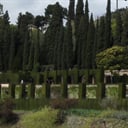The ancient ruins of Carthage are located in which modern-day country?
Carthage was the capital city of the ancient Carthaginian civilization, on the eastern side of the Lake of Tunis in what is now a residential suburb of Tunis, Tunisia. Built on a promontory on the Tunisian coast, it was placed to influence and control ships at sea. Carthage was the most important trading hub of the ancient Mediterranean and one of the most affluent cities of the classical world.
The ancient city was destroyed by the Roman Republic in the Third Punic War in 146 BC and then re-developed as Roman Carthage, which became the major city of the Roman Empire in the province of Africa. The city was later sacked and destroyed by both Umayyad Caliphate forces and Crusaders. The Arabs then decided to destroy its defenses so it could not be used as a base by a hostile power again.
The history of the period of Ancient Carthage, therefore, suffered much from the city's destruction by Rome or later conflicts. It was not until after World War II that systematic, unbiased, excavation work at Carthage would begin; a paradigm consistent with the excavation and interpretation of many other ancient sites.
Carthage still lies in ruins in modern-day Tunisia and remains an important tourist attraction and archaeological site. The outline of the great harbor can still be seen as well as the ruins of the homes, public baths, temples, and palaces from the time when the city of Carthage ruled the Mediterranean as the jewel of the North African coast.
More Info:
en.wikipedia.org





